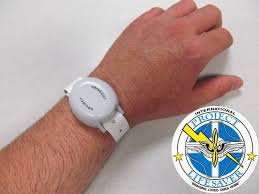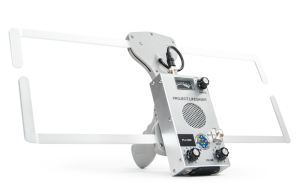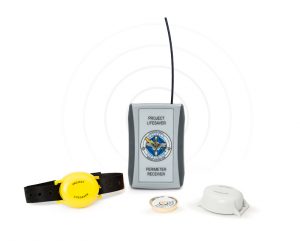The Project Lifesaver Program . . .
. . . is a system to assist in locating vulnerable individuals (children or adults) who wander due to cognitive challenges. In the event a person gets separated from their caregiver, the system utilizes a tracking tool to quickly bring them to safety.
The system is administered by public safety-oriented organizations and includes equipment, training, procedures and record keeping.
Project Lifesaver is for people with Alzheimer’s disease, autism, Down Syndrome, stroke, traumatic brain injury, or other cognitive conditions.
When a candidate is accepted into the program, a personal locating unit device, about the size of a wrist watch, is attached to their wrist or ankle using a hospital ID type of band. It is worn 24/7 (waterproof) on a wrist or ankle transmitting a trackable radio pulse or “chirp” every second.
The transmitter is worn by the “client” all of the time because you never know when they might elope. There are one mile and three mile transmitters. The three mile model is better suited for those who can cover a lot of ground in a short amount of time. It is important to understand that the client must have a responsible person near them at all times so, in the event the client elopes, they will be missed and a search can be initiated.

In the event the client goes missing the caregiver must call 911 to report a missing person who is a Project Lifesaver client and provide their unique transmitter frequency. If there is a Project Lifesaver member agency covering that area they will quickly respond with tracking equipment to begin a search for the client. If the client lives in an area that does not yet have coverage by a Project Lifesaver member agency the caregivers will need to have their own tracking equipment and be responsible for the search. The tracking equipment is also useful should the client be traveling to an area that does not yet have Project Lifesaver coverage by a public safety agency.

The Project Lifesaver Perimeter system is also an available option which can alert caregivers when the client goes outside of the immediate area around the device. This allows a search to begin quickly and may even avoid a search.
